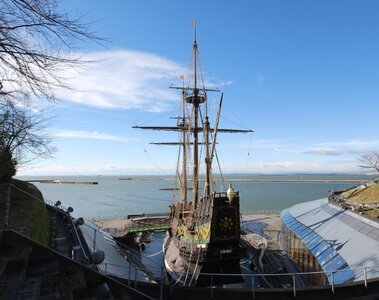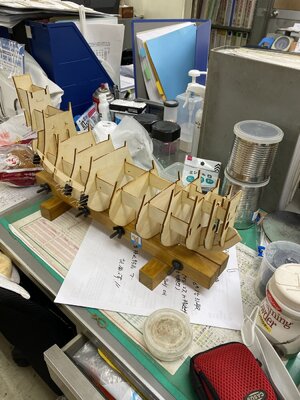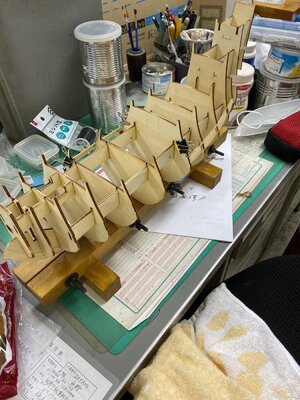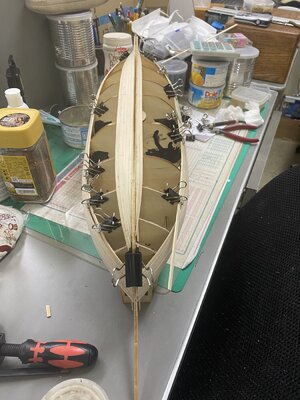You are using an out of date browser. It may not display this or other websites correctly.
You should upgrade or use an alternative browser.
You should upgrade or use an alternative browser.
- Joined
- Oct 19, 2018
- Messages
- 313
- Points
- 278

ありがとうございます。Now THIS will be a fascinating build. Good luck!
のんびりと励みます。
Thank you very much.
Relax and encourage.
Last edited by a moderator:
This could become a very interesting build Fukui, good luck with it, and have funDank u zeer.
ontspannen en stimuleren
- Joined
- Oct 19, 2018
- Messages
- 313
- Points
- 278

応援ありがとうございます。This could become a very interesting build Fukui, good luck with it, and have fun 応援ありがとうございます。
Thank you for your support.
Last edited by a moderator:
- Joined
- Oct 19, 2018
- Messages
- 313
- Points
- 278

ありがとうございます。Woody Joe has some interesting and beautiful models. I haven't seen a build log from this manufacturer on here, but maybe I just missed it.
I will follow with great interest.
Thank you very much.
Last edited by a moderator:
This should be fun! Nice looking kit! Magic Mike
- Joined
- Oct 19, 2018
- Messages
- 313
- Points
- 278

ありがとうございます。looking forward to following your build.
- Joined
- Oct 19, 2018
- Messages
- 313
- Points
- 278

ありがとうございます。This should be fun! Nice looking kit! Magic Mike
- Joined
- Sep 9, 2021
- Messages
- 262
- Points
- 238

In the Sevillian town of Coria del Río (Spain) there are more than 600 inhabitants who share the surname Japón. The origin of this fact dates back to the year 1614, when some of the members of the Keicho Embassy, led by the samurai Hasekura Tsunenaga, settled in that Andalusian municipality.
This story is now topical due to the effort of a group of Japanese to save a replica of the galleon that originally transported the 180 crew members of that expedition and which is located in the town of Ishinomaki.
 El Pais 2021
El Pais 2021






This story is now topical due to the effort of a group of Japanese to save a replica of the galleon that originally transported the 180 crew members of that expedition and which is located in the town of Ishinomaki.
 El Pais 2021
El Pais 2021





- Joined
- Sep 9, 2021
- Messages
- 262
- Points
- 238

The Keicho Embassy, considered the first Japanese diplomatic mission to reach America and Europe, arose at the initiative of a feudal lord named Date Masamune. This notorious man had seen his income streams cut off by a tsunami, which, with the authorization of the Japanese central government, led him to extend his trade ties to other continents.
To achieve this, of course, it was necessary to have a ship up to the challenge, so the feudal lord hired about 5,000 carpenters, blacksmiths and helpers, who took 45 days to build a ship in the style of what is known as "galleons". de Manila", which made the route between the Philippine capital and Acapulco, in New Spain.
As the Spanish had the most advanced technology at that time, the construction had the advice of a Spanish navigator named Sebastián Vizcaíno.
The Japanese galleon, known as San Juan Bautista, reached Mexico. After crossing that country by land, the Japanese delegation continued its journey in Spanish ships to Cuba, Spain, France and the Vatican, the final destination of its trip. The religious component of this trip is important, since at that time the Jesuits and the Franciscans were fighting for control of Europe's relations with Japan. On board the ship was the Franciscan Luis Sotelo, one of the main promoters of the expedition and, to facilitate trade relations, the members of the diplomatic delegation not only planned a visit to the Vatican, but many of them converted to Christianity. .
It cannot be said that the mission was a success —Japan ended up outlawing Christianity and expelling Catholic priests—, but some of those travelers decided to settle in Coria del Río, a town they had known when they entered the Iberian Peninsula by going up the Guadalquivir River. .
Over the years, those Japanese began to have offspring with the local population. And according to some Spanish historians, to avoid the Sevillians the bad taste of pronouncing the complicated Japanese surnames, the priest who baptized them had to register them with the surname Japón, which still survives today in more than 600 corianos.
 El Pais 2021
El Pais 2021
Cheers
To achieve this, of course, it was necessary to have a ship up to the challenge, so the feudal lord hired about 5,000 carpenters, blacksmiths and helpers, who took 45 days to build a ship in the style of what is known as "galleons". de Manila", which made the route between the Philippine capital and Acapulco, in New Spain.
As the Spanish had the most advanced technology at that time, the construction had the advice of a Spanish navigator named Sebastián Vizcaíno.
The Japanese galleon, known as San Juan Bautista, reached Mexico. After crossing that country by land, the Japanese delegation continued its journey in Spanish ships to Cuba, Spain, France and the Vatican, the final destination of its trip. The religious component of this trip is important, since at that time the Jesuits and the Franciscans were fighting for control of Europe's relations with Japan. On board the ship was the Franciscan Luis Sotelo, one of the main promoters of the expedition and, to facilitate trade relations, the members of the diplomatic delegation not only planned a visit to the Vatican, but many of them converted to Christianity. .
It cannot be said that the mission was a success —Japan ended up outlawing Christianity and expelling Catholic priests—, but some of those travelers decided to settle in Coria del Río, a town they had known when they entered the Iberian Peninsula by going up the Guadalquivir River. .
Over the years, those Japanese began to have offspring with the local population. And according to some Spanish historians, to avoid the Sevillians the bad taste of pronouncing the complicated Japanese surnames, the priest who baptized them had to register them with the surname Japón, which still survives today in more than 600 corianos.
 El Pais 2021
El Pais 2021Cheers
Last edited:
- Joined
- Oct 19, 2018
- Messages
- 313
- Points
- 278

In the Sevillian town of Coria del Río (Spain) there are more than 600 inhabitants who share the surname Japón. The origin of this fact dates back to the year 1614, when some of the members of the Keicho Embassy, led by the samurai Hasekura Tsunenaga, settled in that Andalusian municipality.
This story is now topical due to the effort of a group of Japanese to save a replica of the galleon that originally transported the 180 crew members of that expedition and which is located in the town of Ishinomaki.
El Pais 2021
View attachment 354161
View attachment 354162
View attachment 354163
View attachment 354164
View attachment 354165
View attachment 354166
この船舶の説明、ありがとうございます。In the Sevillian town of Coria del Río (Spain) there are more than 600 inhabitants who share the surname Japón. The origin of this fact dates back to the year 1614, when some of the members of the Keicho Embassy, led by the samurai Hasekura Tsunenaga, settled in that Andalusian municipality.
This story is now topical due to the effort of a group of Japanese to save a replica of the galleon that originally transported the 180 crew members of that expedition and which is located in the town of Ishinomaki.
El Pais 2021
View attachment 354161
View attachment 354162
View attachment 354163
View attachment 354164
View attachment 354165
View attachment 354166
- Joined
- Oct 19, 2018
- Messages
- 313
- Points
- 278

この船舶の説明、ありがとうございます。The Keicho Embassy, considered the first Japanese diplomatic mission to reach America and Europe, arose at the initiative of a feudal lord named Date Masamune. This notorious man had seen his income streams cut off by a tsunami, which, with the authorization of the Japanese central government, led him to extend his trade ties to other continents.
To achieve this, of course, it was necessary to have a ship up to the challenge, so the feudal lord hired about 5,000 carpenters, blacksmiths and helpers, who took 45 days to build a ship in the style of what is known as "galleons". de Manila", which made the route between the Philippine capital and Acapulco, in New Spain.
As the Spanish had the most advanced technology at that time, the construction had the advice of a Spanish navigator named Sebastián Vizcaíno.
The Japanese galleon, known as San Juan Bautista, reached Mexico. After crossing that country by land, the Japanese delegation continued its journey in Spanish ships to Cuba, Spain, France and the Vatican, the final destination of its trip. The religious component of this trip is important, since at that time the Jesuits and the Franciscans were fighting for control of Europe's relations with Japan. On board the ship was the Franciscan Luis Sotelo, one of the main promoters of the expedition and, to facilitate trade relations, the members of the diplomatic delegation not only planned a visit to the Vatican, but many of them converted to Christianity. .
It cannot be said that the mission was a success —Japan ended up outlawing Christianity and expelling Catholic priests—, but some of those travelers decided to settle in Coria del Río, a town they had known when they entered the Iberian Peninsula by going up the Guadalquivir River. .
Over the years, those Japanese began to have offspring with the local population. And according to some Spanish historians, to avoid the Sevillians the bad taste of pronouncing the complicated Japanese surnames, the priest who baptized them had to register them with the surname Japón, which still survives today in more than 600 corianos.
El Pais 2021
Cheers
- Joined
- Jul 9, 2019
- Messages
- 495
- Points
- 323

What a great background to your model. And you are off to a great start.
Cheers.
Cheers.
- Joined
- Oct 19, 2018
- Messages
- 313
- Points
- 278

褒めて頂き、What a great background to your model. And you are off to a great start.
Cheers.
ありがとうございます。
















